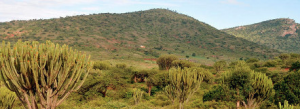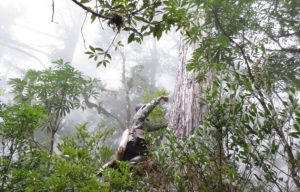 A new web-based application now makes it possible for small-scale farmers to see the African forests for the trees.
A new web-based application now makes it possible for small-scale farmers to see the African forests for the trees.
Known as the Vegetationmap4Africa, the app enables users to identify vegetation as a way to better understand and sustainably manage landscapes while also ensuring a diverse mixture of species.
“The goal of the app is to select ecologically-suitable tree species, ‘the right tree for the right place and purpose,’ and their best seed sources for forestry, agroforestry or ecological restoration projects and for millions of small-holder agroforesters,” said Roeland Kindt, a senior ecologist at the World Agroforestry Centre (ICRAF).
For example, a farmer who wants to plant seeds can refer to the app, which also works offline, to determine which will work best on a chosen parcel of land. The app includes a fact sheet showing how well a seed will grow under different conditions such as erosion or drought. A spreadsheet also allows users to share information and make recommendations.
“New roll-outs of the app are inspired on feedback from users on the best balance between user-friendliness and the amount of information,” Kindt said.
The user-friendly technology comes as communities worldwide are grappling with drastic deforestation. Global Forest Watch reported 40 football fields a minute, or 39 million acres of tropical forests in Africa and Southeast Asia were lost in 2017. Meanwhile, in Africa, forests have been cleared for commercial purposes such as palm oil plantations, cocoa production and furniture, or for fuelwood, mineral extraction and small farming. At the same time, climate change has contributed to loss of forest cover, with drought, desertification, and other environmental pressures eroding woodlands.
Click here for the full story.
Originally published on the Global Landscapes Forum website.






 A new web-based application now makes it possible for small-scale farmers to see the African forests for the trees.
A new web-based application now makes it possible for small-scale farmers to see the African forests for the trees.